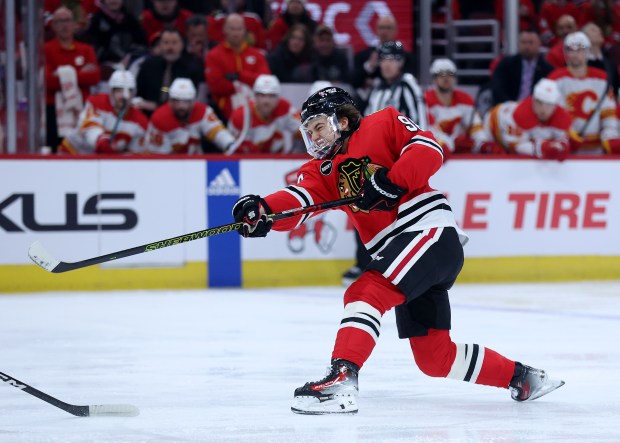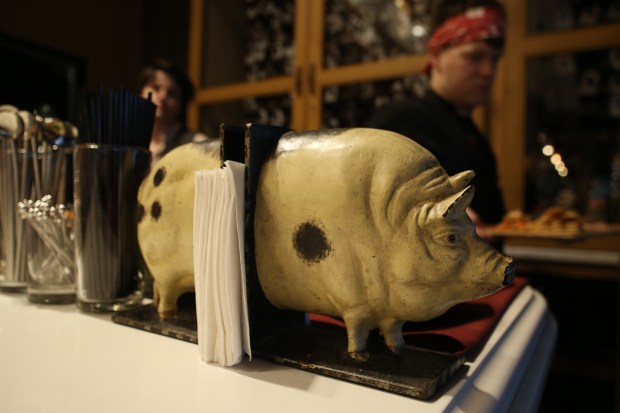Connor Bedard is a fairly straight shooter — except when it comes to his shot.
Ask him about shot adjustments or his signature toe-drag move, and it can be like dragging teeth to get him to elaborate.
“I don’t know if my shot’s evolved,” Bedard recently told reporters. “I’ve switched like once maybe, but it was just something I tried in the summer already, so nothing crazy.”
When Bedard says “nothing crazy” or “nothing too crazy,” it’s like his way of saying “no big deal.”
Taylor Raddysh, a Chicago Blackhawks teammate as well as neighbor in their downtown apartment building, lent some insight into why Bedard might be reticent about talking up his shooting prowess.
“I’ll tell him it was a nice shot, or some of the stuff he does, I’ll tell him it’s sick, but he’s quiet and he’s pretty humble about his stuff,” Raddysh told the Tribune.
“He doesn’t really pump his own tires, even when I’m sure he knows that he’s done something pretty cool.”
That’s OK. There are plenty of people — teammates, coaches, elite players from other teams and experts — who’ve been willing to dissect and discuss Bedard’s shot technique and have been pretty effusive about it.
The Tribune talked to several of them over the course of Bedard’s first NHL season, in which he leads all rookies with 22 goals and 59 points after scoring in the Hawks’ 3-2 upset of the Dallas Stars on Saturday at the United Center.
1. It’s got that ‘whip’ appeal.
To understand Bedard’s shot, get familiar with the term “whippy.”
“Whip” refers to the flexibility of a player’s hockey stick. The lower the “flex” number, the more bend a stick has and the more tension that’s built up on the shot release when the stick flicks a puck off the ice.
Raddysh, for example, uses an 85. Bedard uses a 70 flex, which is pretty low by NHL standards.
“He’s a little weaker than me, so it’s probably why he uses (a 70),” Raddysh said with a smile.
Several veterans and coaches say lower numbers are in vogue with younger generations.
Said Blackhawks assistant coach Derek Plante: “I played with Brett Hull, and he was all about the whip and having a whippier stick. Even at that time, I think he was maybe at 85 when everyone else is at 100, 110.”
Bedard’s stick allows him to put some extra mustard on his fastball, but Plante, a former center, knows from experience those whippy sticks take a lot of dexterity to control. Whenever he tried them, the pucks veered left.
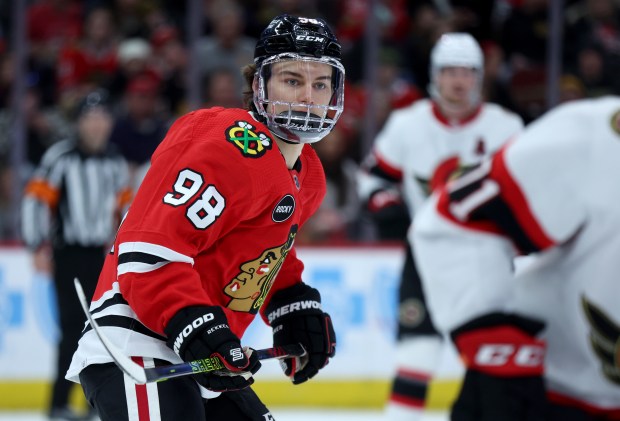
“You can’t just shoot it as hard as you can, there’s got to be a little bit of finesse to it,” he said. “That’s usually what happens with lighter flexes, you over-flex it, you just shoot right through it and it’s so bent that the pucks just goes off to nowhere.”
Hawks defenseman Seth Jones uses a stiffer 90 flex. It helps in puck battles.
“You don’t want to be using a wet noodle in front of the net when you’re trying to lift someone’s stick because they do break a little bit easier,” he joked.
But he admires what Bedard has been able to do with his shot.
“When it’s that whippy you don’t need a lot of weight behind it,” Jones said. “It comes off like a BB, a rocket.”
2. Don’t sweat the technique.
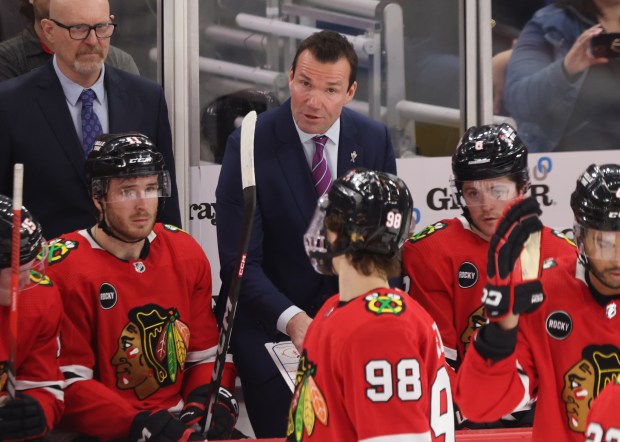
Taylor Hall was supposed to mentor Bedard early on as his right wing, but he injured his knee in November and was lost for the season. Still, it didn’t take long to notice Bedard’s swing was special.
“It’s almost like a golfer,” Hall said. “An amateur golfer will try to swing out of their shoes, where the pros, they let the club do the work. And they hit it square on the head every time.”
Coach Luke Richardson had a more conventional view of Bedard’s shot
“He’s got a great release and it comes from anywhere,” Richardson said. “It can be in tight, through a D’s legs, or it could be coming downhill when he has a lot of time. He gives goalies different looks and I think that keeps them guessing.”
No argument from Nashville Predators goaltender Juuse Saros. Bedard has “great technique and a really hard shot, so he can change the angle a lot, even right before the shot.”
Besides, the league has been shifting to that quick-release style compared with 20 years ago, when the big windup of the slap shot was more prevalent.
“More and more guys are trying to shoot that way that they’re changing the angle right before the shot,” Saros said. “The play is a little bit harder (for goalies) to read, too.”
Added Predators star Filip Forsberg: “It’s cool to watch the way he shoots. He can get a really good wood on it from really any release point.”
But Bedard’s release is unique.
“Every shot or every player is like a fingerprint,” Turk said. “Bedsy, his inward pull is negative. It goes back a little bit prior to the puck going forward. That inward pull is more deceptive because the goalie’s visual on the puck changes dramatically.
“It’s like he’s not going to shoot it because he’s taking it backward, so to speak.”
Turk said he has seen only a handful of players, including Vladimir Tarasenko or Max Pacioretty, with that kind of release. But they’re left-handed and Bedard’s a righty, which makes him all the more unusual.
That release “allows him to choose in the middle of a shot-release where to place the puck,” Turk said. “The target changes. … He can decide to go cross-body with it, he can go to the same side of the body, he can direct it.”
Turk said Bedard’s form, how much bend he can put on his stick before shooting, also stands out.
“Snapping equals speed,” he said. “When that shot takes place, his elbow comes in, his right arm comes into a straight line (and) his elbow completely locks out in a downward trajectory, and that’s where he’s getting that projection on the puck. It’s really cool.”
3. When it comes to hockey sticks, it’s about the long and short of it.
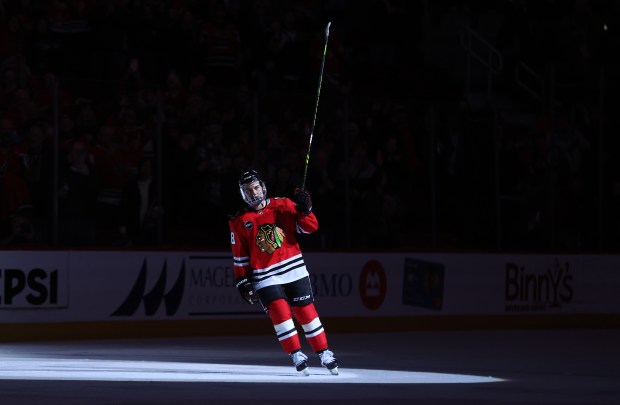
Plante is struck by how Bedard uses a long stick for his 5-foot-10 height.
“It’s really interesting because sometimes that really hinders someone when they use a long stick because it just gets in the way and it’s cumbersome and everything,” Plante said. “But the way he can use a long stick to his advantage and he can reach a lot farther.
“He’s got strong hands because he can really shoot a puck (from) way out here. So his range is pretty amazing. You just don’t see that very often.”
Jones had a similar assessment of Bedard’s stickhandling.
“Especially on the rush, he uses the defender to his advantage, he uses them as a screen and then the way he can change the angle,” Jones said. “He keeps it wide and brings it into his feet.
“He’s one of the best at it already.”
Bedard signed an endorsement deal with Sherwood Hockey and told the Tribune he has used the same stick throughout the season.
Brendon Arnold, the company’s associate vice president of brand management, said Sherwood’s stick scientists typically start out with 56 and 70 sticks for a player and use product testing, video and player feedback to narrow the options.
They arrived at a stick from the Rekker line — the Rekker Legend Pro — with a P92 pattern (or curve of the blade) and a lie five (the angle the blade meets the shaft), with some tweaks made for Bedard.
It has “a lower kick point for a faster release,” Arnold said.
“We know from a percentage standpoint, what his favorite shot is and how often he shoots that,” he said. “So he may shoot a wrist shot 70% of the time in his career, he may shoot a snapshot 20% of the time, he may do slapshots, the least, at 10%.
“So if you know that type of data, you know what to build. … We’re going to use this (Rekker) as the baseline and then get your flex, get your pattern, get your lie all perfect.”
4. Skill and equipment mean little without hockey IQ.
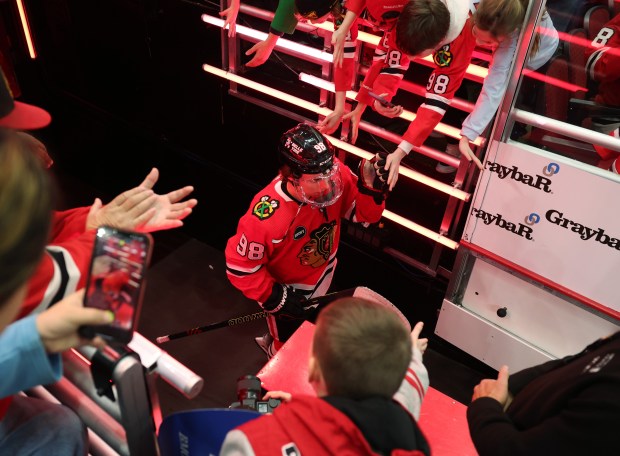
Part of the DNA of Bedard’s shot is toe-drag, which allows him to drag the puck on the ice with his stick blade a bit longer and keep goalies guessing when the shot is coming and where it’s going.
“Deception is probably the No. 1 key for anyone, and that’s what he’s doing really well,” Forsberg said. “He just disguises well, he shoots through screens.
“He scored that nice goal against Edmonton, a little slip and shot, which is hard to do, and he’s doing it at a really high level already.”
He was referring to Bedard’s goal during a Dec. 12 road game against the Oilers in which he launched the puck from the left circle into the far side of the net — with practically no whip or windup, just a flick of the wrist.
“The biggest thing is he gets hard shots off from tough angles,” Forsberg said.
Plante agreed about Bedard’s deceptiveness, noting Bedard also uses defensemen’s feet to hide his shot.
“When the goalie doesn’t see the puck … and (you combine it with) the quick release, the puck’s halfway there before the goalie really knows you shot it,” he said.
For Colorado Avalanche forward Nathan MacKinnon, the favorite to win the Hart Trophy as the NHL MVP, it’s difficult to separate the skill from the physical gifts and hockey IQ.
“He’s a really strong guy, he’s a lot of muscle, an unreal shot,” he said of Bedard. “(But) some underrated parts of his game (includes) his playmaking. His vision is awesome out there.”
5. Modeling after Auston Matthews.
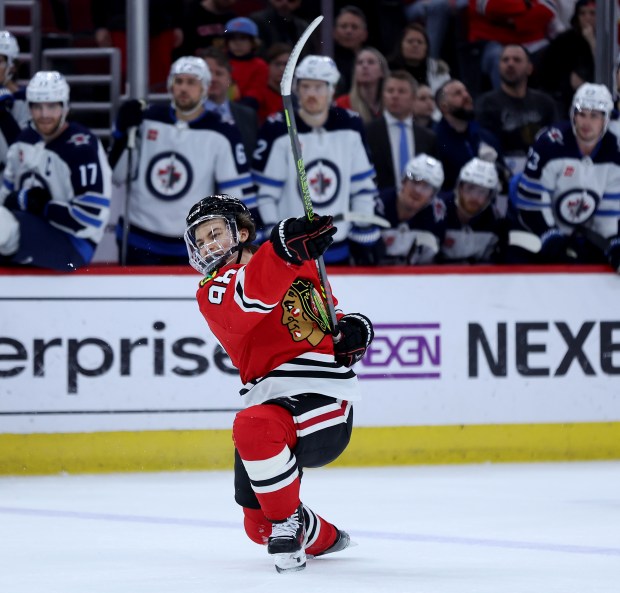
Bedard said he has borrowed a lot of techniques from a variety of hockey heroes, including Pittsburgh Penguins great Sidney Crosby, but he consistently admits modeling his shot after Matthews, the Toronto Maple Leafs star.
Matthews scored hat tricks in back-to-back games to open the season ahead of his first matchup against Bedard, and the veteran was complimentary of the rookie.
“He shoots it as good as anybody I’ve seen, he is definitely special in that regard,” Matthews told reporters.
Bedard returned the favor: “He’s someone that I feel like pioneered a certain shot. He’s got six (goals) in two (games), so he’s doing something right.”
Later that month, Bedard expounded on his admiration for Matthews, saying, “I’ve watched a lot of hockey in general and try to take things, but Matthews is a big guy for the shot for myself. Growing up watching that, he’s one of the best in the league, so I try to learn from that.”
Leafs prospect Fraser Minten played bantam hockey with Bedard in the Vancouver area.
“The whole pulling it in and snapping it, it was Auston who started doing that in the NHL,” Minten said. “He definitely mimicked that and would work on that for hours.
“It’s no accident it looks similar.”
6. When you talk about form, Bedard’s just posturing.
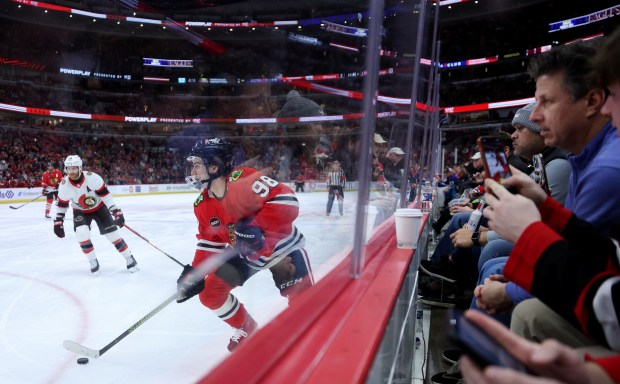
Shooting and scoring coach Tim Turk remembers the first time he saw Bedard when he was around 16.
“I get a call from Bedsy’s agent, and I rarely talked to the big guy himself,” Turk said. “And he asked me if I could work with two players (Bedard and Nate Danielson) like the next day.”
Turk said he was booked “but he’s like, ‘I need you Turkey,’ ” so Turk squeezed them in for shot drills and analysis.
Based in eastern Ontario, Turk wasn’t as familiar with the western Canadian, Bedard. But during drills, Bedard’s posture immediately stood out as elite.
“I haven’t seen that since Steven Stamkos,” Turk said. “In my world, when players lift up their foot, their posture goes out.”
Not so with Bedard, who kept his shot form whether it was on one foot or two.
“He did a single-leg shot and his chest and forward instead of going back with the foot coming up,” Turk said. “This kid, at the time he was 16 years old, and I’m going, ‘Holy crap.’ That’s super unique for this kid to apply stuff like that and he had never even met me before.”
When asked about how he developed that ability, Bedard shrugged: “A lot of my shooting is self taught, I’d say.”
Turk also kept track of Bedard’s reversion rate, which is when a player, under pressure from a defender, changes his posture to protect himself.
“When they get under stress or when they’re getting attacked, they just lift (a foot),” he said. “They’ll just be like, ‘Oh, man, I’m lifting up a foot. I’m going to take my shot. I’m going to hope for the best and I’m going to react after.’ And when you lift the foot off the ice, you’re compromising your timing, form and reaction because your stability gets compromised.”
Turk said Bedard is like high-end players such as Connor McDavid and Leon Draisaitl, who don’t flinch.
“When that pressure comes, they don’t care,” Turk said. “They’re just going to do what they have decided to do and stick with it.”
When Bedard was asked about sticking to form under pressure, he gave a knowing look, kind of a non-verbal “nothing too crazy.”
“I’ve snapped a lot of pucks in my life,” he said, matter of fact. “I feel good either way.”
7. Homework for the future.
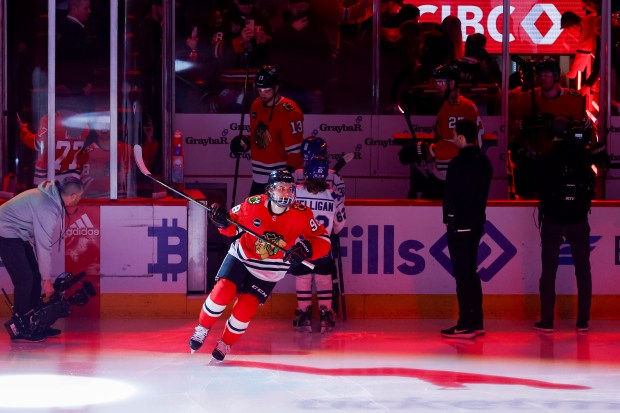
Even Matthews had to make adjustments, so there’s a lesson in that for Bedard, Hawks veteran winger Nick Foligno said.
“Teams are starting to understand he likes to pull and drag and shoot through, much like Matthews,” he said. “Matthews has now realized the quick release is sometimes better.”
As for Bedard, “he’s just always trying to evolve, which is a credit to him at 18,” Foligno said. “He tinkers with ways he’s going to shoot the puck, and that’s what great players do.”
Plante, the Hawks assistant coach, recommends Bedard get to spots on the ice more quickly and take more one-timers.
“Just quicker form, try to get to spots that make the goalie move more,” he said.
You get the goalie moving and you create openings to score.
Plante calls it getting “lost.”
“It’s not necessarily shooting from higher (in the offensive zone) but getting up higher and then now coming into a dead space, because if a defender’s watching you, you can get away from him for a second,” he said. “Now you can dart to a hole and be wide open — and you get the goalie moving.”
Bedard has been learning in the film room as well as on the ice, but like the cliche, there’s no teacher like experience.
“With a little bit older players that maybe have lost a step, but they’re still super effective because why? They’re cagey, they’re gamey,” Bedard said. “They can still produce and perform at a (high) level where even if their foot speed is not there.”
Said Plante: “That’s where he’s not yet. He’s just got all the physical tools and a lot of smartness, but give him three or four years when he’s got all his gameyness, too, with a skill set, like, who knows where he is?”
Also, if Bedard grows as a defender — even though that’s not his game — it helps get the puck back to him on offense, Plante said.
Turk welcomes the chance to work with Bedard again. He said the rookie center already keeps the puck in a “condense and compact” area in proximity to his body, but he can still work on keeping it tighter consistently.
“With Bedard, I didn’t have to make the modification,” he said. “It’s just making him understand what he’s doing well, so that he can do it much stronger.
“He needs to create more downward force quicker, you know, pushing down (on his release). The first thing you ask a kid is, ‘When you push down on your stick, what’s it make your stick do?’ ”
Break.
“Try and break your stick when you’re shooting,” Turk said. “That means you’re getting power. Downward pressure flexes your stick and use that kick-return technology to your advantage.
“His mix that he has is good, and when he starts strengthening up, holy s—, look out.”


